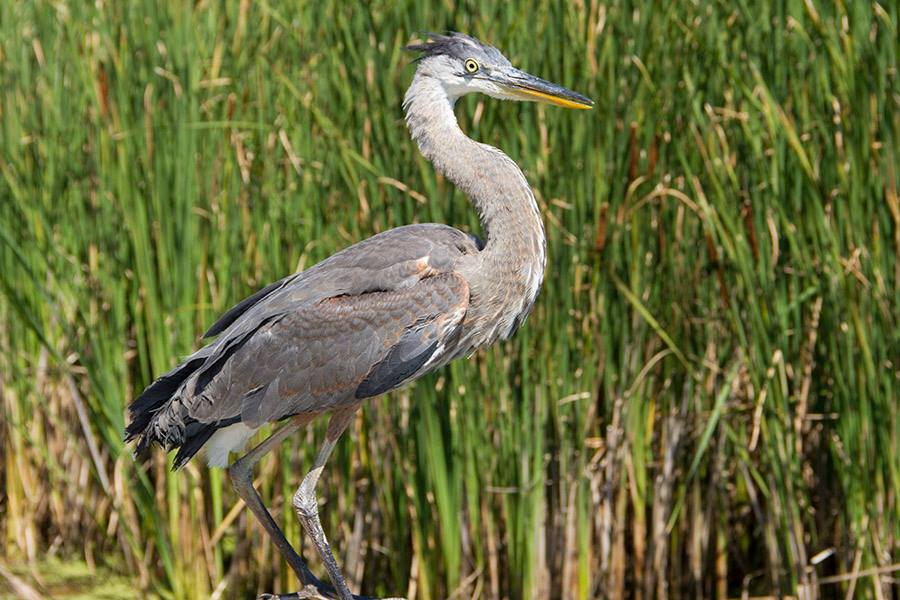Written by Jordyn Ginestra, summer intern
The Great Blue Heron. A species so tied to my childhood I never had to learn how to recognize it, and its name is one I never had to learn. I grew up in the floodplains of the Mississippi river. My grandfather and I would sit in the middle of Forked Lake in his old, metal canoe, fishing lines dipped in the water, watching this creature’s slow wading, its careful steps in the cypress knees. These times with my grandfather were never complete without the heron’s still presence and our quiet noticing.

Upon my first few weeks here in Two Rivers, I’ve spotted the Great Blue Heron everywhere. Whether it be its slow flying over the East River or its wading near the marina, it seems this beautiful bird has followed me even further north from my Saint Louis home.
Native to most of North America, the Great Blue Heron frequents Wisconsin in the spring and stays through late summer to take advantage of its many fish-filled lakes and meandering rivers. It’ll eat and breed before traveling back to southern states for the fall and winter. It is identified by its slate gray-blue feathers, reddish brown legs, a black crown, and long strands of black feathers extending at the base of the head.
Their nests can be found on the ground if placed on a solitary island where predation is limited or up to 30 meters in the trees if placed on an exposed bank. Predators (which include racoons, snakes, opossums, and other large birds) will target the herons’ eggs and newly hatched chicks. Placing their nest higher up in the trees can help limit the likelihood that a ground dwelling predator will get into their nest. This, however, is not the only way they strive to protect their nests. The herons will nest in large colonies, utilizing safety in numbers, and become aggressive upon threat, using their long beaks and legs to defend their nests.
Once a nest is established, a heron may return to the same spot year after year to raise their next young.
The Great Blue Heron, the first bird I ever fell in love with, established in me the importance of noticing. Watching these birds shadow the orange of dawn every spring as they returned to the place my grandfather and I call home, showed me that everything holds space in this world. We, as humans, are no greater than what lives in our backyard.
photo of Great Blue Heron by Nancy Nabak
